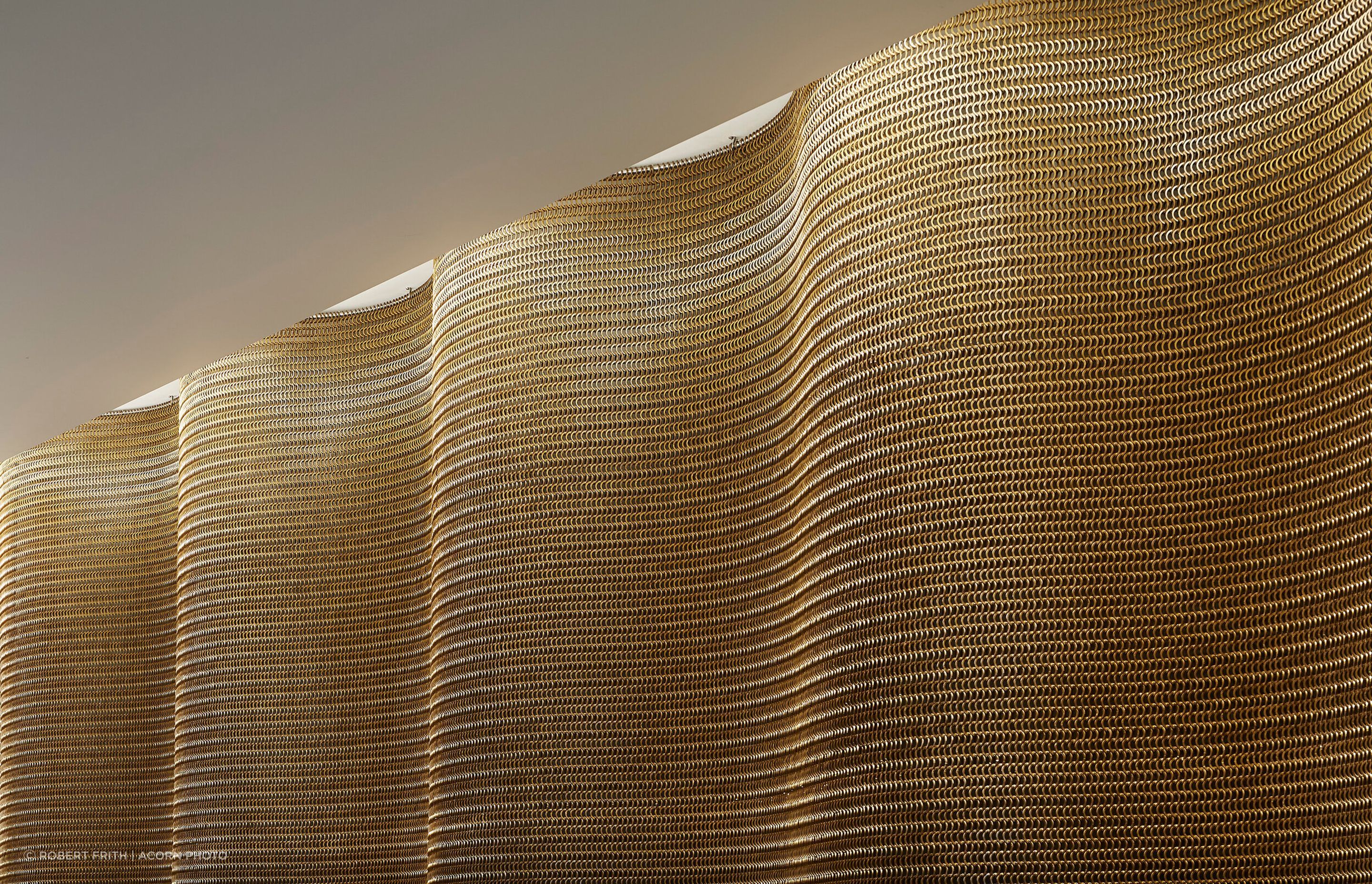RE/8: The new architectural mesh that's changing the game
Written by
07 September 2023
•
6 min read
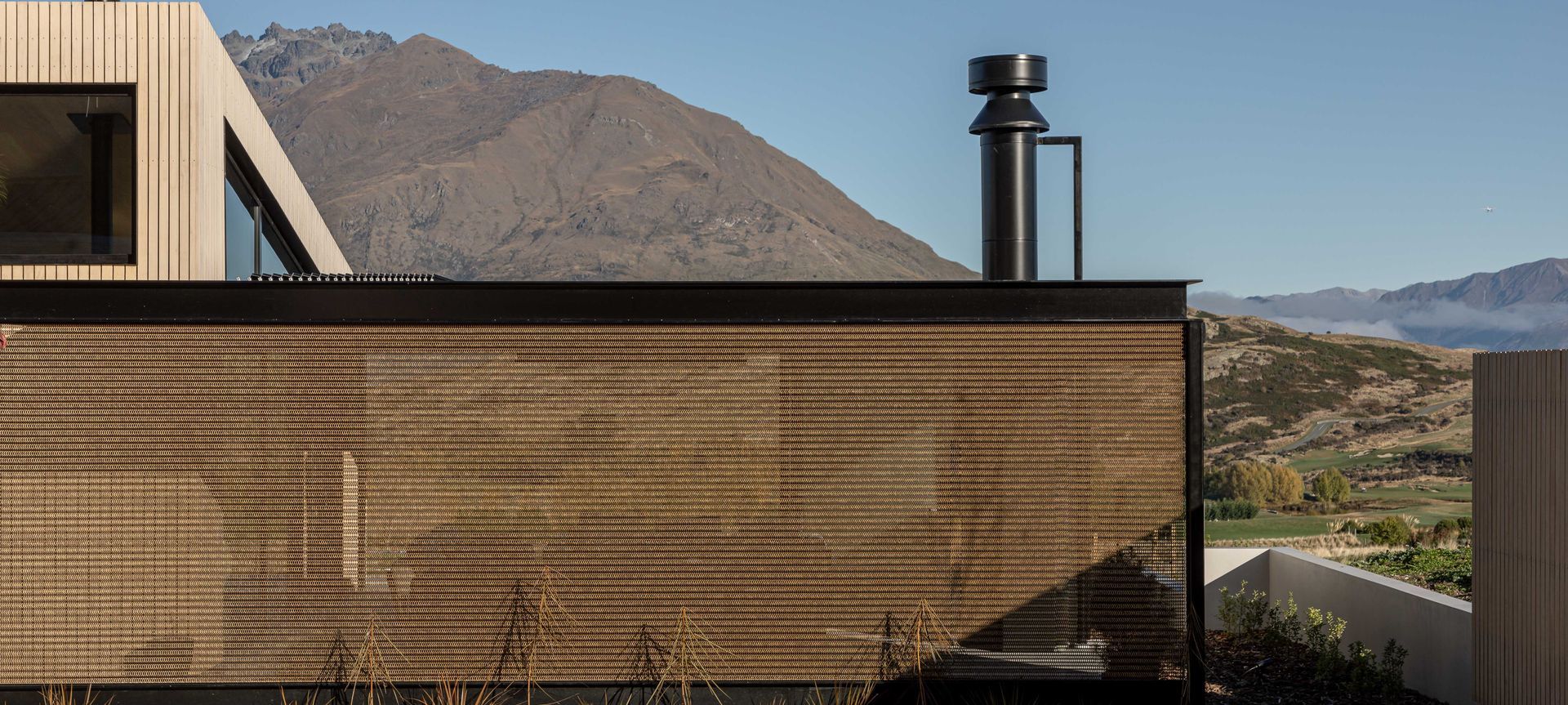
Architectural mesh has a long history of making building façades look and feel more interesting. From the beginning, it’s served both functional and aesthetic purposes: introducing metallic texture and beauty while providing buildings with privacy, shade and ventilation.
Though its true beginnings stretch back centuries, modern iterations in the 20th century saw several evolutions: designers began to experiment with different mesh patterns, weaves, finishes and materials to create not only striking façades but also interior partitions, balustrades and even art installations.
But it wasn’t until relatively recently that any material besides some form of metal was used in the manufacturing of the mesh – and few could have predicted that the introduction of a new material would originate from the set of Lord of the Rings in the early 2000s.
Kayne Horsham, the art director of the creatures, armour and weapons department for the films, needed to come up with a way to make realistic-looking chainmail armour for the actors without using actual metal – a single metal chainmail shirt could weigh up to 35 kgs and would render an actor exhausted after an hour.
Horsham came up with his own version: linking not metal rings, but rings made with a lightweight plastic. This solved the weight problem for the films – but Horsham envisioned big things for his new invention after the trilogy wrapped.
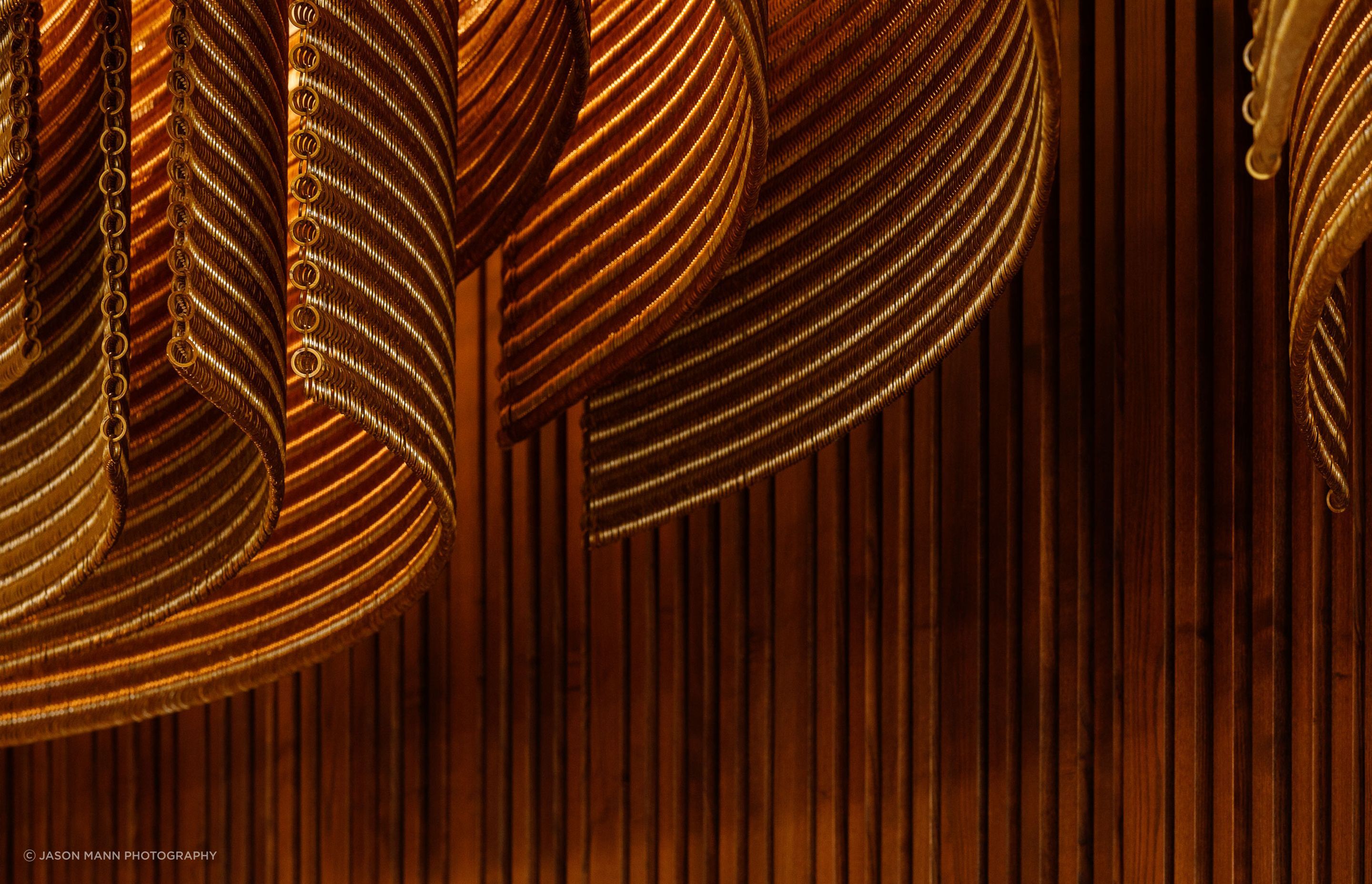
Kayne then turned to the architecture industry, and honed in on architectural mesh. If actors could benefit from lighter, more efficient ringmail, so could buildings. He developed a patented liquid injection manufacturing process that would substitute the heavy, easily rusted metal architectural mesh with polycarbonate, while keeping the iconic look of interlinked rings.
The architecture industry, both here and abroad, took notice, and soon he created his company – the aptly named Kaynemaile – which specialises in polycarbonate chain architectural mesh with a higher strength-to-weight ratio than steel, used as a façade material and for solar screening.
But what exactly is architectural mesh, how are architects using it in 2023, and how does Kaynemaile fit into this? ArchiPro sat down with Aaron Te One from Kaynemaile, who goes into detail about its benefits and the key features that make Kaynemaile’s pioneering product a force in the architecture industry.
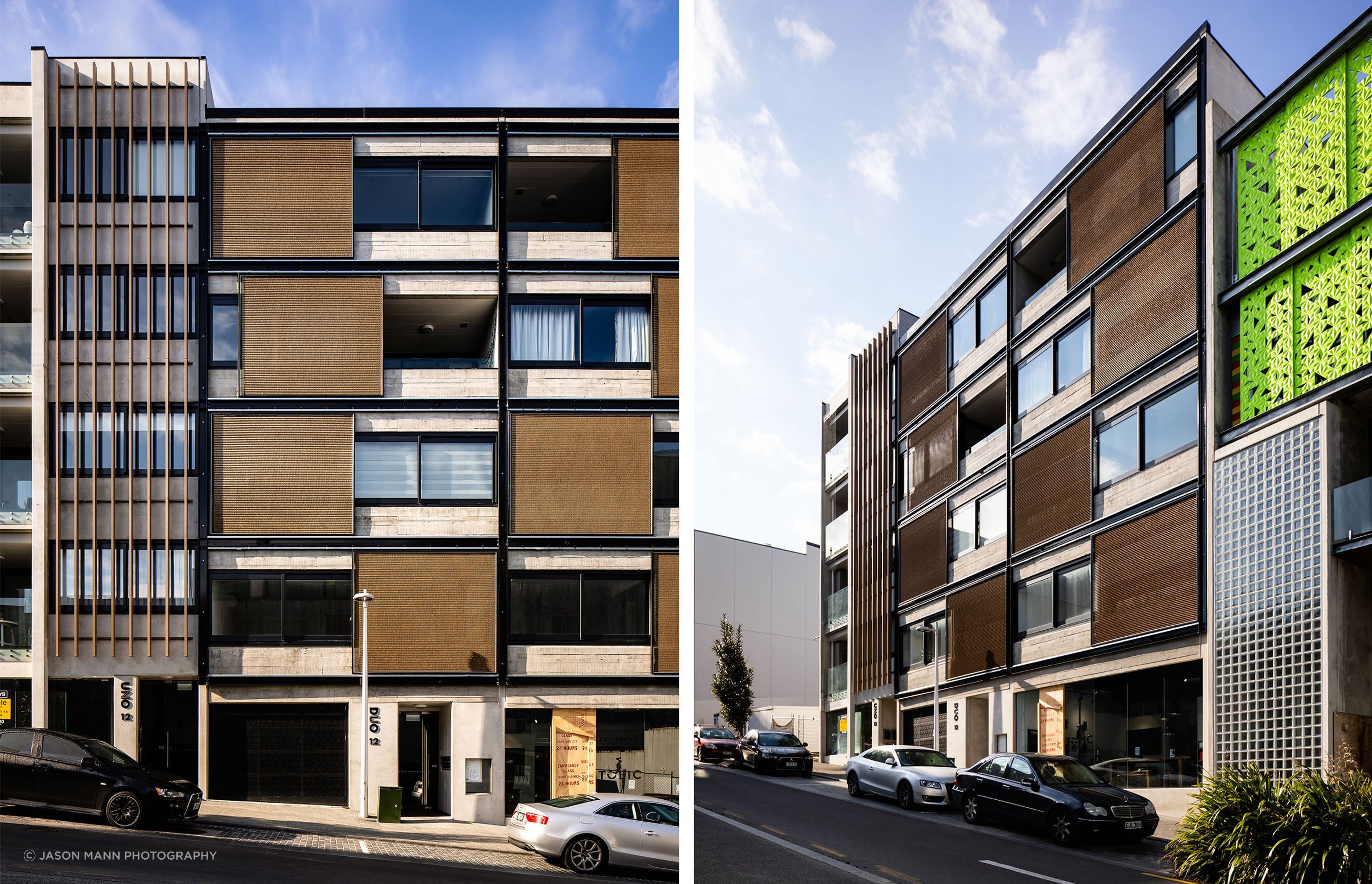
ArchiPro: Firstly can you explain what architectural mesh is, for those who may be unfamiliar?
Aaron Te One: Traditionally, architectural mesh is made from woven steel wire or cable. It’s typically used as an exterior screening material for solar shading and weather protection applications where a solid material or panel is not suitable either for airflow or aesthetic purposes.
In many instances, architectural metal mesh is interchangeable with perforated or expanded metal panels, and the selection process comes down to aesthetics versus price. Not great criteria! Metal products are by their nature limited – there are a number of disadvantages when it comes to weight, rust and heat transfer.
Kaynemaile's RE/8 architectural mesh, however, is a wholly unique product based on traditional metal chainmail. Each ring in a Kaynemaile mesh screen is joined to four others during manufacturing which gives us the ability to make screens of any dimension without the constraints of a panel size.
Our architectural mesh can be used on façades as well as in interiors for decorative features or spatial separation.

AP: Let’s talk about RE/8. Can you give me a brief overview of the product?
ATO: RE/8 is a new evolution of Kaynemaile’s mesh which is now made with a sustainable raw material thanks to the great partnership with our suppliers Covestro. We decided to relaunch the product with a name that reflected the circularity of the new material.
AP: What are the benefits of RE/8, both functionally and aesthetically?
ATO: Kaynemaile’s RE/8 architectural mesh has a number of significant benefits in both exterior and interior applications. Our unique manufacturing process means we can make screens to any dimension, which reduces the secondary support required, offering significant design freedom at the concept stage.
Being made from polycarbonate makes it both strong and lightweight. The 3-D nature of RE/8 mesh means that it provides great solar reduction properties as well as airflow and weather protection.
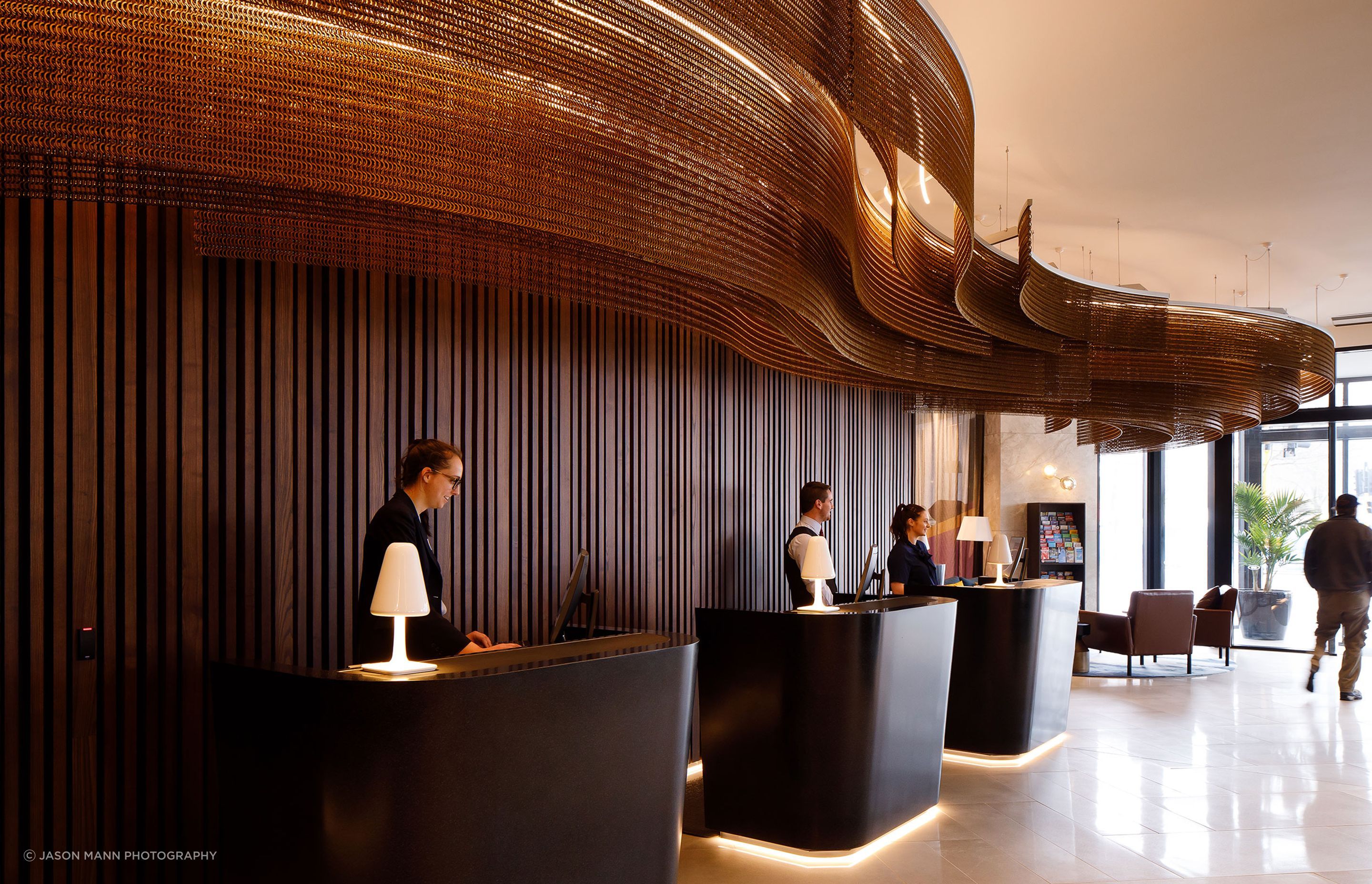
AP: How do these benefits compare with metal or other materials?
ATO: Our conditions in New Zealand mean steel tends to rust, and even stainless steel can develop staining over time. Powder coating and paint finishes can break down pretty fast, especially in coastal areas.
Our RE/8 product is made from an engineering grade polycarbonate – meaning it will never rust, and the colours are ingrained not applied to the surface, making it ideal for coastal areas. It’s also great for its solar shading benefits: steel heats up and becomes a radiator, holding and releasing heat back to the structure and the surrounding environment. Compared to metal, polycarbonate tends to stay steady at more ambient temperatures.
Our unique manufacturing process means we can make screens to any dimension. Most screening or metal mesh products have a fixed panel size and are rigid which can be limiting from an aesthetic and a structural sense. If you are looking for something seamless or slightly more flowing there are very little products that fit the bill.
AP: Tell me more about the solar shading benefits of RE/8 for residential spaces.
ATO: We always knew Kaynemaile mesh had great shading capabilities – but until we had it tested by GNS laboratories in Wellington, we didn’t realise just how effective it was.
As cities around the world become more populated the urban heat island effects are expanding and felt for longer. RE/8 can reduce solar gain by 70% without sacrificing airflow – making it a passive way to reduce internal building temperatures without relying on methods that drain energy.

AP: Can you tell me about the product’s sustainable qualities?
ATO: When we first started Kaynemaile we investigated a huge range of raw materials to see what might work with our unique injection moulding process.
We always had the idea of material reuse in mind and have carried that through our nil-waste manufacturing process.
The idea of material circularity and product stewardship has been with us from the start. Polycarbonate stood out as it is a single polymer and ideal for the circular economy and product reuse. In a sense we have been waiting for the raw material technology to catch up with our dream.
With RE/8 we are now a step closer to that dream. It uses a new raw material from our suppliers, Covestro, who are leaders in the field of bio-waste processing. Through a mass-balancing approach which replaces petrochemicals with bio-mass feedstocks, we’ve seen a significant carbon reduction in our manufacturing.
On a more micro level, we’ve always had a nil-waste ethos and can reprocess our own off-cuts directly back into our production system. We’ve also repurposed and repaired many old screens from customers and put them back into circulation in different sizes and orientations – that’s the beauty of the material!
Learn more about Kaynemaile and RE/8 architectural mesh.
